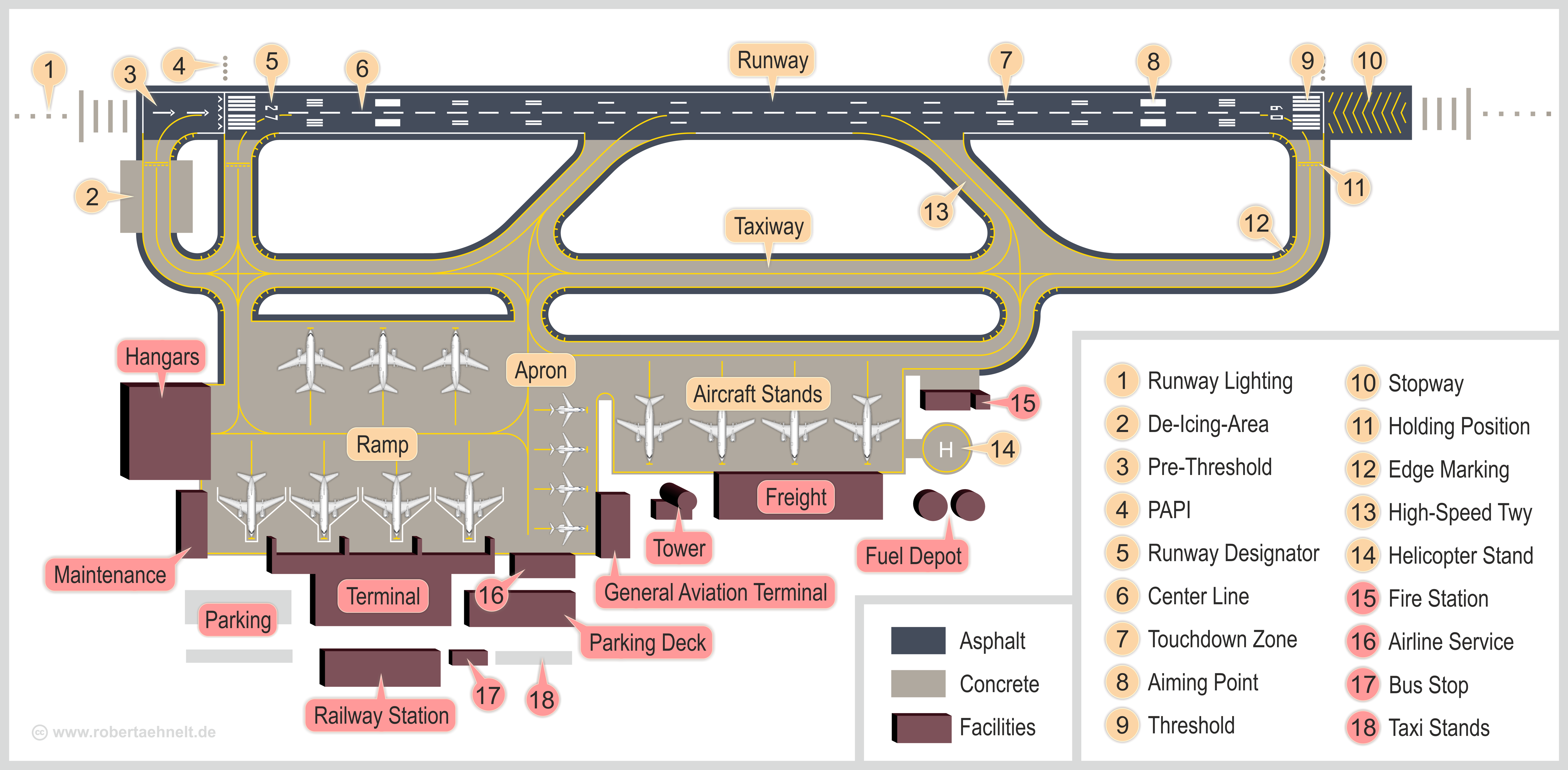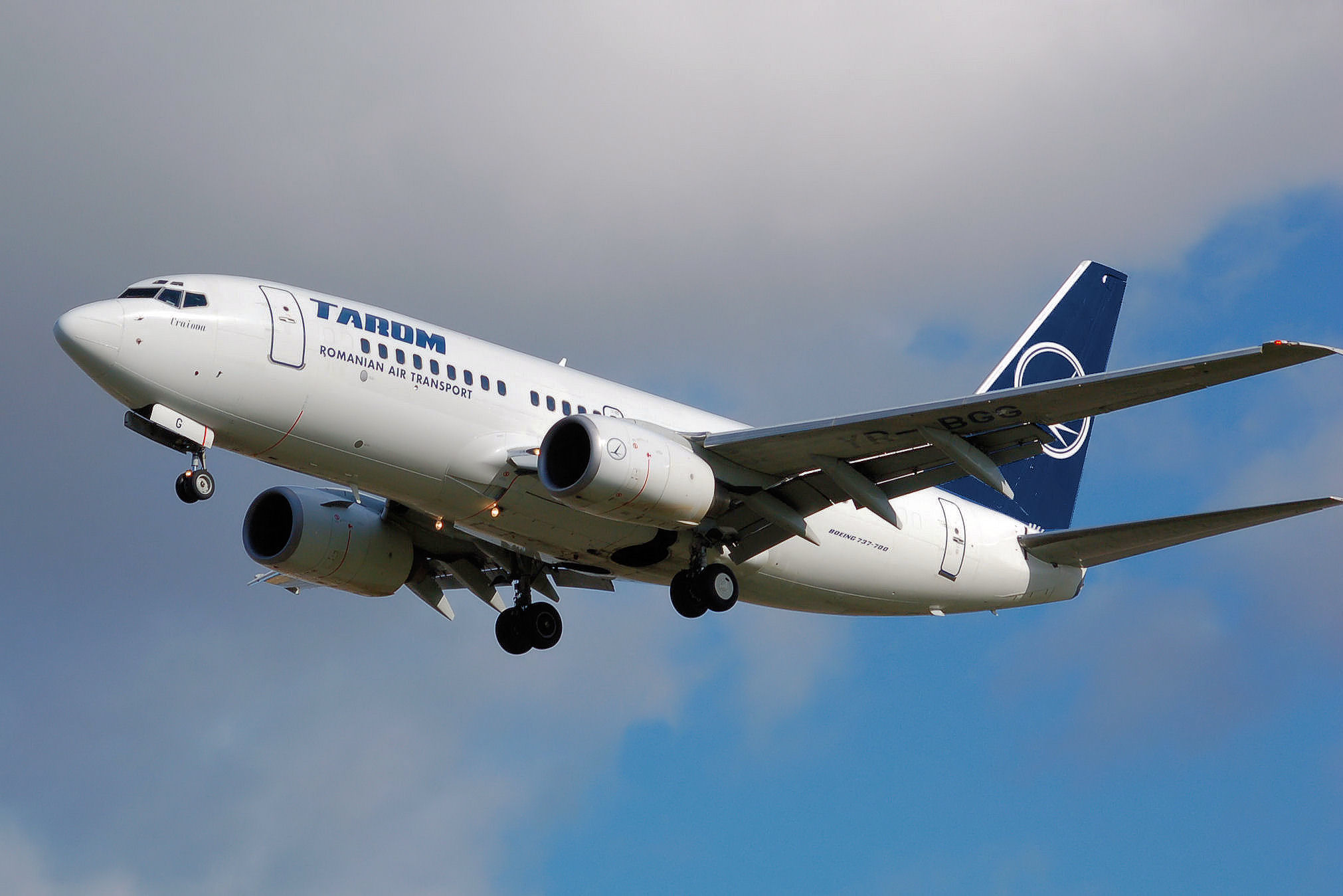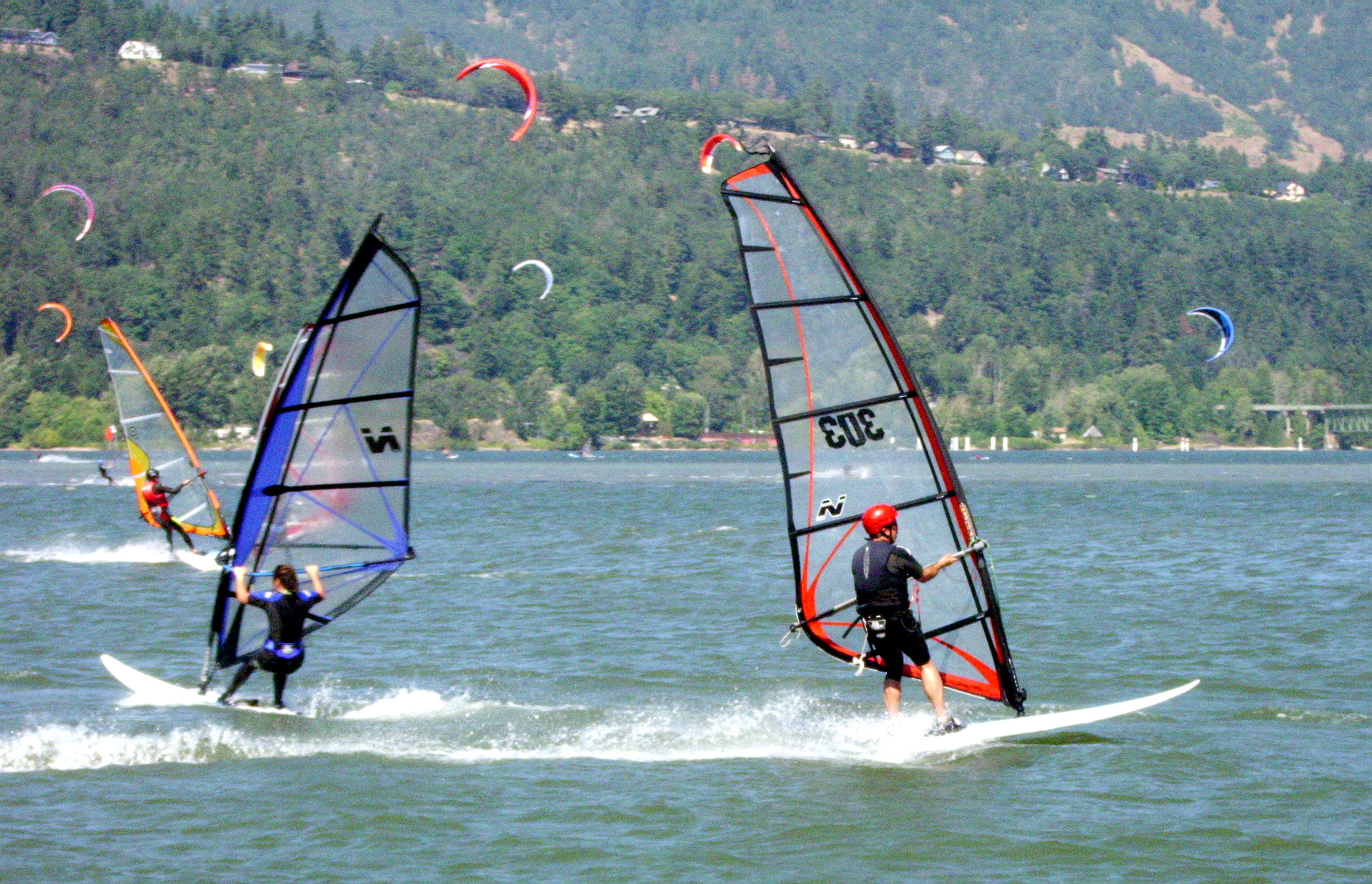|
Apparent Wind
Apparent wind is the wind experienced by a moving object. Definition of apparent wind The ''apparent wind'' is the wind experienced by an observer in motion and is the relative velocity of the wind in relation to the observer. The ''velocity of the apparent wind'' is the vector sum of the ''velocity of the headwind'' (which is the velocity a moving object would experience in still air) plus the ''velocity of the true wind''. The headwind is the additive inverse of the object's velocity; therefore, the ''velocity of the apparent wind'' can also be defined as a vector sum of the ''velocity of the true wind'' minus the ''velocity of the object''. Apparent wind in sailing In sailing, ''apparent wind'' is the speed and direction of wind indicated by a wind instrument ( anemometer) on a ''moving'' craft (on water, land or ice) in undisturbed air. It is composed of the ''combined'' speeds and directions of the craft and wind observed by a ''stationary'' wind instrument—the ''true ... [...More Info...] [...Related Items...] OR: [Wikipedia] [Google] [Baidu] |
Course (navigation)
In navigation, the course of a watercraft or aircraft is the cardinal direction in which the craft is to be Steering, steered. The course is to be distinguished from the ''Heading (navigation), heading'', which is the direction where the watercraft's Bow (watercraft), bow or the aircraft's Nose cone, nose is pointed. The path that a vessel follows is called a track or, in the case of aircraft, ground track (also known as ''course made good'' or ''course over the ground''). The intended track is a route. Discussion For ships and aircraft, routes are typically Great-circle distance, straight-line segments between Waypoint, waypoints. A navigator determines the ''bearing'' (the compass direction from the craft's current position) of the next waypoint. Because water currents or wind can cause a craft to drift off course, a navigator sets a ''course to steer'' that compensates for drift. The helmsman or pilot points the craft on a ''heading'' that corresponds to the course to s ... [...More Info...] [...Related Items...] OR: [Wikipedia] [Google] [Baidu] |
Airport
An airport is an aerodrome with extended facilities, mostly for commercial Aviation, air transport. They usually consist of a landing area, which comprises an aerially accessible open space including at least one operationally active surface such as a runway for a airplane, plane to take off and to land or a helipad, and often includes adjacent utility buildings such as Air traffic control, control towers, hangars and airport terminal, terminals, to maintain and monitor aircraft. Larger airports may have airport aprons, taxiway bridges, air traffic control centres, passenger facilities such as restaurants and Airport lounge, lounges, and emergency services. In some countries, the US in particular, airports also typically have one or more fixed-base operators, serving general aviation. Airport operations are extremely complex, with a complicated system of aircraft support services, passenger services, and aircraft control services contained within the operation. Thus airpor ... [...More Info...] [...Related Items...] OR: [Wikipedia] [Google] [Baidu] |
Aircraft Carrier
An aircraft carrier is a warship that serves as a seagoing airbase, equipped with a full-length flight deck and hangar facilities for supporting, arming, deploying and recovering carrier-based aircraft, shipborne aircraft. Typically it is the capital ship of a naval fleet, fleet (known as a carrier battle group), as it allows a naval force to power projection, project seaborne naval aviation, air power far from homeland without depending on local airfields for staging area, staging aerial warfare, aircraft operations. Since their inception in the early 20th century, aircraft carriers have evolved from wooden vessels used to deploy individual tethered reconnaissance balloons, to nuclear marine propulsion, nuclear-powered supercarriers that carry dozens of fighter aircraft, fighters, strike aircraft, military helicopters, airborne early warning and control, AEW&Cs and other types of aircraft such as unmanned combat aerial vehicle, UCAVs. While heavier fixed-wing aircraft such as a ... [...More Info...] [...Related Items...] OR: [Wikipedia] [Google] [Baidu] |
Fixed-wing Aircraft
A fixed-wing aircraft is a heavier-than-air aircraft, such as an airplane, which is capable of flight using aerodynamic lift. Fixed-wing aircraft are distinct from rotary-wing aircraft (in which a rotor mounted on a spinning shaft generates lift), and ornithopters (in which the wings oscillate to generate lift). The wings of a fixed-wing aircraft are not necessarily rigid; kites, hang gliders, variable-sweep wing aircraft, and airplanes that use wing morphing are all classified as fixed wing. Gliding fixed-wing aircraft, including free-flying gliders and tethered kites, can use moving air to gain altitude. Powered fixed-wing aircraft (airplanes) that gain forward thrust from an engine include powered paragliders, powered hang gliders and ground effect vehicles. Most fixed-wing aircraft are operated by a pilot, but some are unmanned or controlled remotely or are completely autonomous (no remote pilot). History Kites Kites were used approximately 2,800 years ago ... [...More Info...] [...Related Items...] OR: [Wikipedia] [Google] [Baidu] |
Friction
Friction is the force resisting the relative motion of solid surfaces, fluid layers, and material elements sliding against each other. Types of friction include dry, fluid, lubricated, skin, and internal -- an incomplete list. The study of the processes involved is called tribology, and has a history of more than 2000 years. Friction can have dramatic consequences, as illustrated by the use of friction created by rubbing pieces of wood together to start a fire. Another important consequence of many types of friction can be wear, which may lead to performance degradation or damage to components. It is known that frictional energy losses account for about 20% of the total energy expenditure of the world. As briefly discussed later, there are many different contributors to the retarding force in friction, ranging from asperity deformation to the generation of charges and changes in local structure. When two bodies in contact move relative to each other, due to these variou ... [...More Info...] [...Related Items...] OR: [Wikipedia] [Google] [Baidu] |
Drag (physics)
In fluid dynamics, drag, sometimes referred to as fluid resistance, is a force acting opposite to the direction of motion of any object moving with respect to a surrounding fluid. This can exist between two fluid layers, two solid surfaces, or between a fluid and a solid surface. Drag forces tend to decrease fluid velocity relative to the solid object in the fluid's path. Unlike other resistive forces, drag force depends on velocity. Drag force is proportional to the relative velocity for low-speed flow and is proportional to the velocity squared for high-speed flow. This distinction between low and high-speed flow is measured by the Reynolds number. Drag is instantaneously related to vorticity dynamics through the Josephson-Anderson relation. Examples Examples of drag include: * Net force, Net Aerodynamic force, aerodynamic or Fluid dynamics, hydrodynamic force: Drag acting opposite to the direction of movement of a solid object such as cars, aircraft, and boat hulls. * Viscou ... [...More Info...] [...Related Items...] OR: [Wikipedia] [Google] [Baidu] |
Land Sailing
Land sailing, also known as sand yachting, land yachting or dirtboating, entails overland travel with a sail-powered vehicle, similar to sailing on water. Originally, a form of transportation or recreation, it has evolved primarily into a racing sport since the 1950s. Vehicles used in sailing are known as sail wagons, sand yachts, or land yachts. They typically have three (sometimes four) wheels and function much like a sailboat, except that they are operated from a sitting or lying position and steered by pedals or hand levers. Land sailing works best in windy flat areas, and races often happen on beaches, airfields, and dry lake beds in desert regions. Modern land sailors, generally known as "pilots", can go three to four times faster than the wind speed. A gust of wind is considered more beneficial in a land sailing race than a favorable windshift. A similar sport, known as ice yachting, is practiced on frozen lakes and rivers. Another variation is the Whike, which combin ... [...More Info...] [...Related Items...] OR: [Wikipedia] [Google] [Baidu] |
Ice Yachting
An iceboat (occasionally spelled ice boat or traditionally called an ice yacht) is a recreational or competition sailing craft supported on metal runners for traveling over ice. One of the runners is steerable. Originally, such craft were boats with a support structure, riding on the runners and steered with a rear blade, as with a conventional rudder. As iceboats evolved, the structure became a frame with a seat or cockpit for the iceboat sailor, resting on runners. Steering was shifted to the front. Because of their low resistance to forward motion over ice, iceboats are capable of speeds exceeding . Because of their speed, iceboats are used both for recreation and for racing. Racing craft typically carry one person. A related activity, land sailing, employs sailing craft similar to iceboats, but riding on wheels instead of runners. History The history of iceboating began in Europe in areas where smooth ice was found in the bays of the Baltic Sea and the canals of the N ... [...More Info...] [...Related Items...] OR: [Wikipedia] [Google] [Baidu] |
Planing (sailing)
Planing ( ) is the mode of operation for a waterborne craft in which its weight is predominantly supported by lift (force), hydrodynamic lift, rather than Hydrostatics, hydrostatic lift (buoyancy). Many forms of marine transport make use of planing, including High-speed craft, fast ferries, racing boats, seaplanes, and water skis. Most surfboards are planing or semi-planing hulls. Beyond planing, fast vessel designs have seen a transition to hydrofoil designs. History The earliest documented planing sailboat was a proa built in 1898 by Commodore Ralph Munroe#Vessels designed, Ralph Munroe. It was capable of speeds of more than twice the hull speed. Planing a sailing Dinghy sailing, dinghy was first popularised by Uffa Fox in Britain. In 1928 Fox introduced planing to the racing world in his International 14 dinghy, ''Avenger''. That year he gained 52 first places, 2 seconds, and 3 third places out of 57 race starts. This performance was noticed by other designers who further ... [...More Info...] [...Related Items...] OR: [Wikipedia] [Google] [Baidu] |
Windsurfing
Windsurfing is a wind-propelled water sport that is a combination of sailing and surfing. It is also referred to as "sailboarding" and "boardsailing", and emerged in the late 1960s from the Californian aerospace and surf culture. Windsurfing gained a popular following across Europe and North America by the late 1970s and had achieved significant global popularity by the 1980s. Windsurfing became an Olympic sport in 1984. History Newman Darby of Pennsylvania created a rudderless "sailboard" in 1964 that incorporated a pivoting square rigged, "square rigged" or "kite rigged" sail which allowed the rider to steer a rectangular board by tilting the sail forward and back. Darby's design however had notable performance limitations. Unlike the modern windsurfer design, Darby's sailboard was operated "back winded", with the sailor's back to the lee side of a kite-shaped sail. This much less efficient and less desirable sailing position is opposite of how a modern windsurfer is operated. ... [...More Info...] [...Related Items...] OR: [Wikipedia] [Google] [Baidu] |
Angle Of Attack
In fluid dynamics, angle of attack (AOA, α, or \alpha) is the angle between a Airfoil#Airfoil terminology, reference line on a body (often the chord (aircraft), chord line of an airfoil) and the vector (geometry), vector representing the relative motion between the body and the fluid through which it is moving. Angle of attack is the angle between the body's reference line and the oncoming flow. This article focuses on the most common application, the angle of attack of a wing or airfoil moving through air. In aerodynamics, angle of attack specifies the angle between the chord line of the wing of a fixed-wing aircraft and the vector representing the relative motion between the aircraft and the atmosphere. Since a wing can have twist, a chord line of the whole wing may not be definable, so an alternate reference line is simply defined. Often, the chord line of the Wing root, root of the wing is chosen as the reference line. Another choice is to use a horizontal line on the fuse ... [...More Info...] [...Related Items...] OR: [Wikipedia] [Google] [Baidu] |








